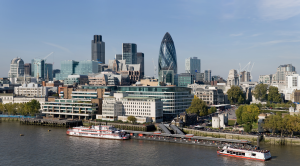 IHBC HESPR member Purcell, in collaboration with the City of London, has developed a toolkit that is designed to provide clear and actionable guidance for owners, occupiers and caretakers of historic and listed buildings to help them reduce carbon and build climate resilience in their heritage buildings.
IHBC HESPR member Purcell, in collaboration with the City of London, has developed a toolkit that is designed to provide clear and actionable guidance for owners, occupiers and caretakers of historic and listed buildings to help them reduce carbon and build climate resilience in their heritage buildings.
image for illustration: City of London © User:Colin and Kim Hansen / Wikimedia Commons
… the physical remnants of the City’s past….must be part of this transition…
The City of London Corporation writes:
The City of London Corporation has adopted ambitious climate goals, with a Climate Action Strategy to achieve net- zero in the City by 2040. As the oldest, most historic part of London, the City (or Square Mile), is the place from which modern-day London grew.
From its origins in around AD50 to the present day, the Square Mile has constantly adapted in response to political and social evolution, catastrophic disaster, and technological advancement
It now needs to respond to a rapidly changing environment brought on by the effects of climate change, transitioning away from a reliance on fossil fuels towards a regenerative future. As a fundamental part of the Square Mile’s identity, the physical remnants of the City’s past (including more than 600 listed buildings) must be part of this transition.
Understanding the Challenges
Whilst there is a large amount of interest and focus on tackling the climate emergency in heritage buildings, action has so far been limited, and projects that have sought to lead the way in terms of carbon reduction and climate resilience, are not widely publicised or shared. Through a series of in- person and online events, interviews and targeted surveys the following key concerns and challenges have been highlighted:
Cost – lack of funding, grants and government support, challenge of building viable business case.
Where to start – whilst there is a lot of information available on this topic, it is often incoherently communicated and complex.
Consistent messaging – inconsistent approach to historic building retrofit across different governing bodies and stakeholders.
Training and skills – knowledge gaps and lack of skills within organisations, those carrying out the work and/or involved in governance and decision making.
Collaboration – need to encouraging greater collaboration, knowledge sharing and benchmarking.
Facilitating Action
Purcell, in collaboration with the City of London, have developed a toolkit that is designed to provide clear and actionable guidance for owners, occupiers and caretakers of historic and listed buildings to help them reduce carbon and build climate resilience in their heritage buildings. It is not intended to replace or supersede existing guidance on this topic, but to collate and signpost best practice principles and examples.
The toolkit provides a resource that will allow building owners to confidently start the process of responsible retrofit, build a business case and deliver the adaptations necessary. Whilst it draws on the historic environment of the Square Mile, referencing typologies that are most significant to the City’s unique character, it is equally relevant to towns and cities in the UK and around the world who are exploring how to adapt their historic buildings for a sustainable future.
See more on HESPR, on Purcell on HESPR, and on Purcell.

